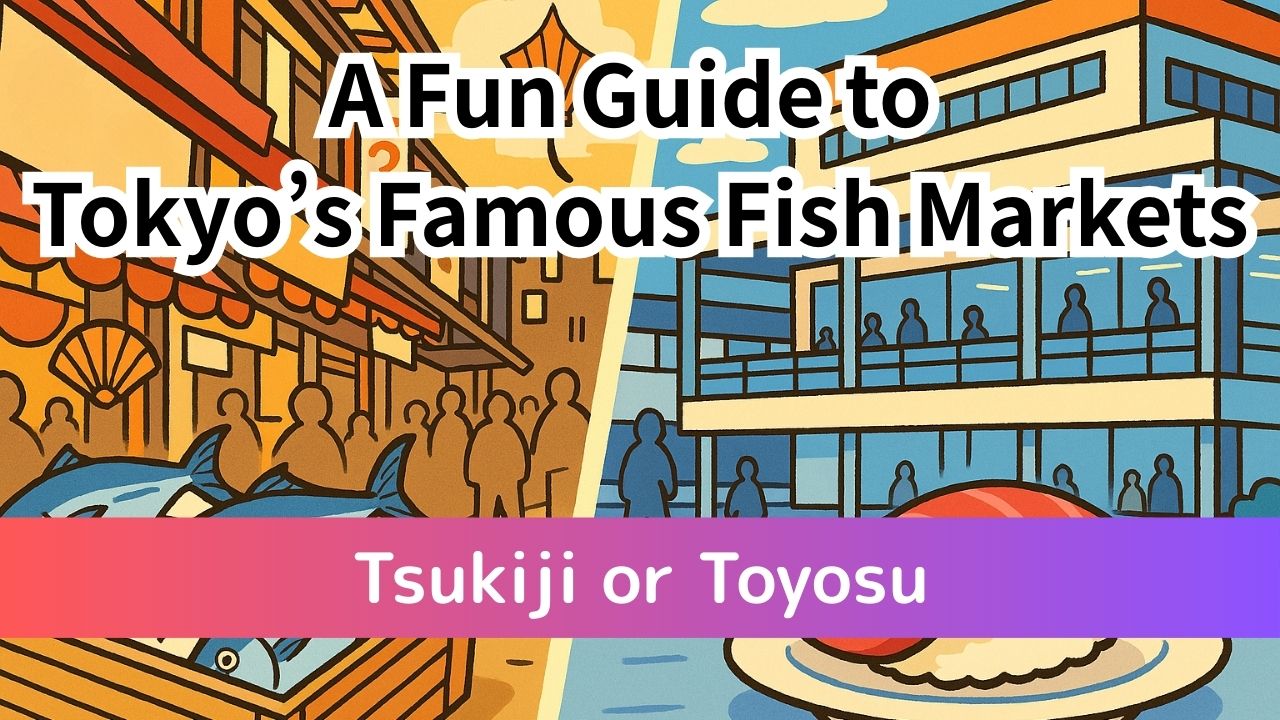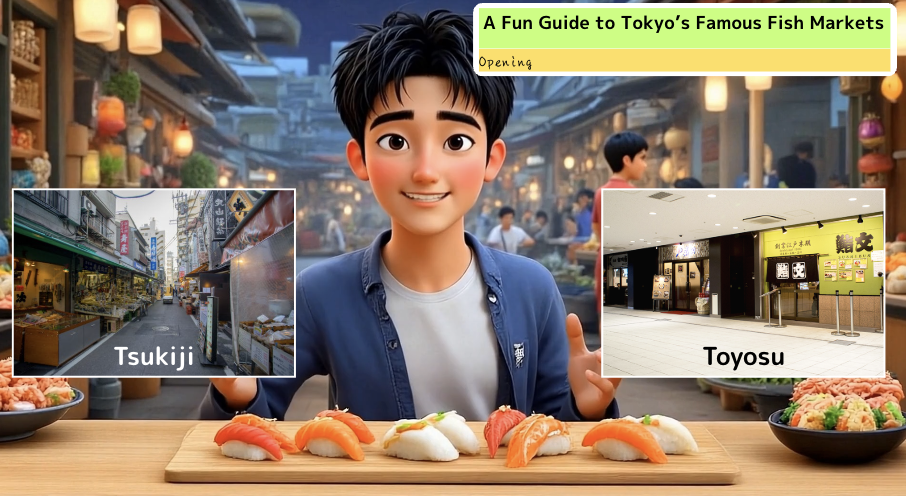
Hello everyone, and welcome! Today, we’re diving into two legendary fish markets in Tokyo: Tsukiji and Toyosu. Think of them like a veteran sushi master from the old days and a young chef with high-tech flair.
Both are famous, but they have completely different vibes. Want to know how they differ and how to get the most out of your visit?
Stay tuned, because we’re going to explore all the juicy details with a bit of humor along the way.
- The History and Role of Tsukiji
- The Tsukiji of Today—Now a Tourist Hotspot
- Toyosu Market—Cutting-Edge Facilities
- Old-School Bustle vs. Modern Comfort
- Tips for Avoiding Crowds
- Finding “Real Japan” Through Your Restaurant Choices
- Market for Sightseeing, Meals Elsewhere—One Clever Strategy
- Enjoy the Best of Both Tsukiji and Toyosu
The History and Role of Tsukiji
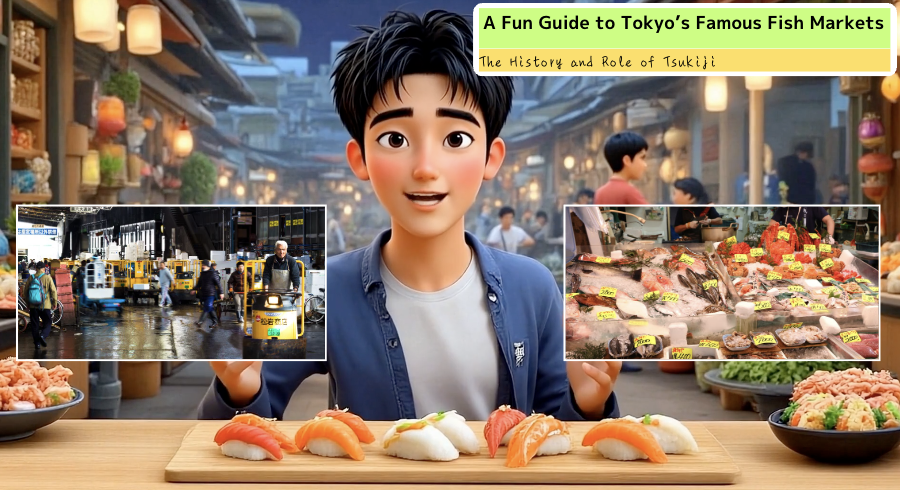
Let’s start with Tsukiji, the original superstar.
Tsukiji Market opened in 1935 and served as Tokyo’s kitchen for decades. Every morning, huge tuna auctions kicked off at the crack of dawn, with professional buyers throwing down serious cash in no time at all.
It was such a spectacle that tourists from around the globe began pouring in for a glimpse.
Eventually, though, the facilities became outdated and cramped, so in 2018, the wholesale functions transferred to Toyosu.
You might think Tsukiji went quiet after that—but no. The ‘outer market’ area lives on, now buzzing as a top tourist attraction.
The Tsukiji of Today—Now a Tourist Hotspot
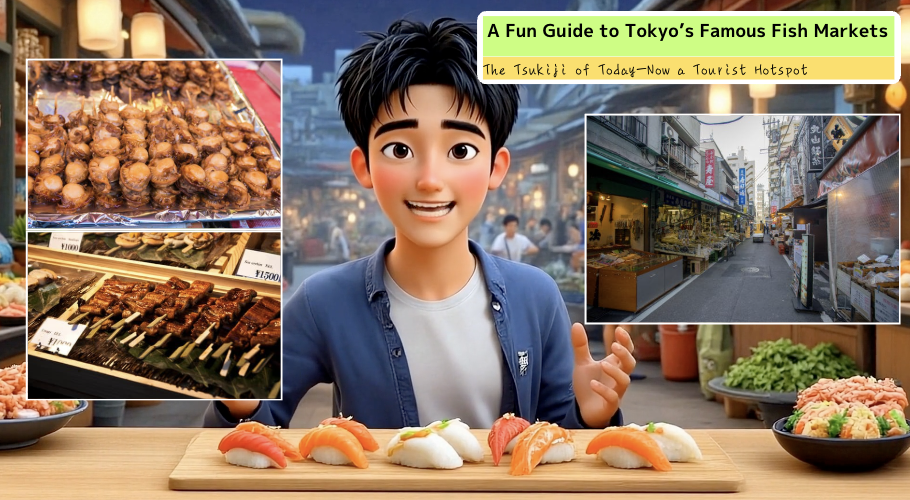
Tsukiji’s outer market used to cater largely to professionals, but nowadays, it’s jam-packed with visitors from all over the world.
The narrow alleys are lined with restaurants and shops, offering everything from sushi and seafood bowls to sweet omelets and desserts.
You can wander around sampling tasty bites left and right—like a big food festival. Long-established shops stand next to trendy new spots that cater mostly to foreign tourists.
Some are even backed by overseas investors who jumped in to capitalize on Japan’s tourism boom.
Of course, it can still be delicious, but if you’re hunting for a more authentic experience, aim for shops that have been around for decades or ones still beloved by locals.
Toyosu Market—Cutting-Edge Facilities
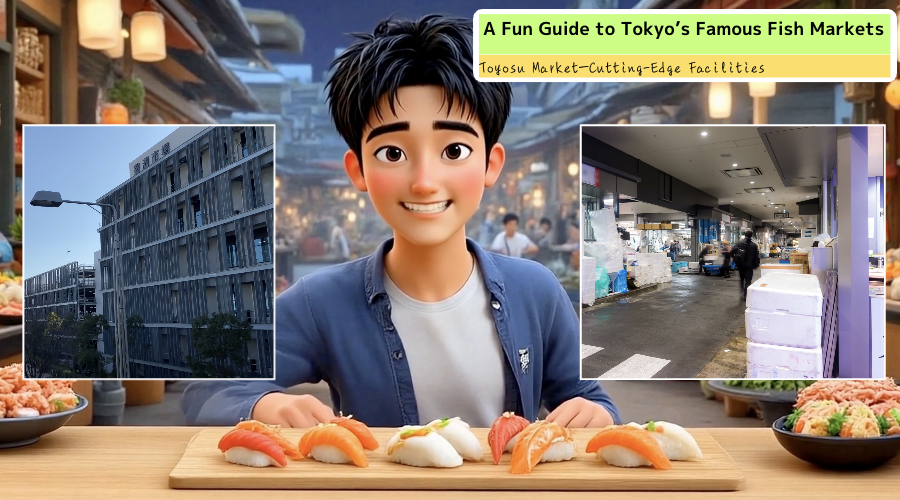
Now let’s look at Toyosu Market.
It opened in 2018 and boasts modern buildings that are spacious and squeaky clean—a stark contrast to Tsukiji’s old-school vibe.
Visitors are mostly kept to designated walkways, with large windows so you can watch the action below.
Toyosu’s sanitation and temperature control are top-notch, and it feels more like an airport terminal or a shopping mall than a traditional fish market.
This is great for comfort and food safety, but some say it’s missing the gritty energy that Tsukiji once had.
Old-School Bustle vs. Modern Comfort
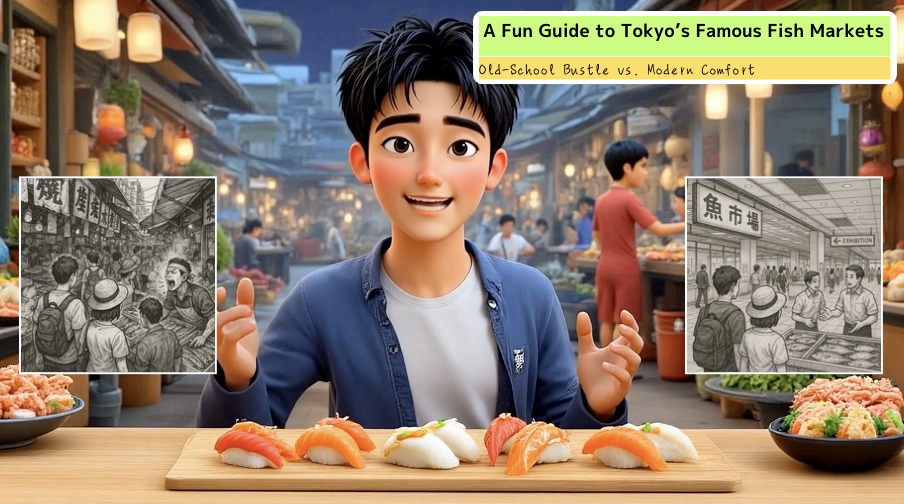
Tsukiji’s charm lies in its down-to-earth, somewhat chaotic atmosphere. Crowded streets, lively shouting, and the pungent smell of fresh fish—it’s gritty, but that’s what gives it character.
Toyosu, on the other hand, is neat and tidy: there’s air conditioning, ample walkways, and exhibits that explain the market’s operations.
If you’re looking for safety and convenience, Toyosu is your best bet. If you’re craving that old-school, bustling market feel,
Tsukiji’s outer market might scratch that itch. Just remember that the original Tsukiji wholesale market function has already moved, so you’re really seeing its modern tourist side.
Tips for Avoiding Crowds
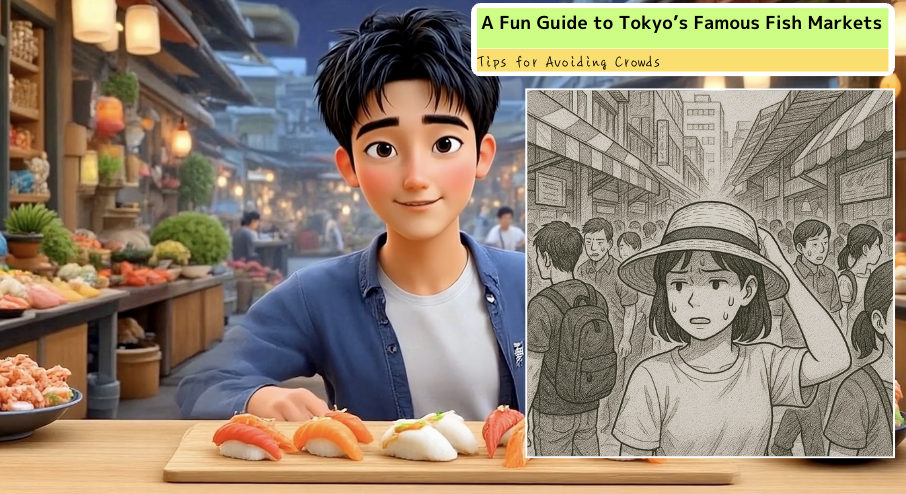
Both Tsukiji and Toyosu can get very crowded, especially at peak times.
At Tsukiji’s outer market, the rush hits around 9 to 11 AM.
It’s shoulder to shoulder at that time, so consider going really early—like 7 AM—or waiting until after lunch when the crowd thins a bit.
Toyosu’s highlight is the early-morning tuna auction around 5 AM, but you’ll need to book in advance or get in through the lottery system if you want the closest view.
It’s not for the faint of heart—or for people who like to sleep in! If you visit later in the morning, you’ll find it less crowded, although the famous sushi spots often still have lines.
If you prefer to skip those lines, look for less well-known or newer restaurants in the market.
Finding “Real Japan” Through Your Restaurant Choices
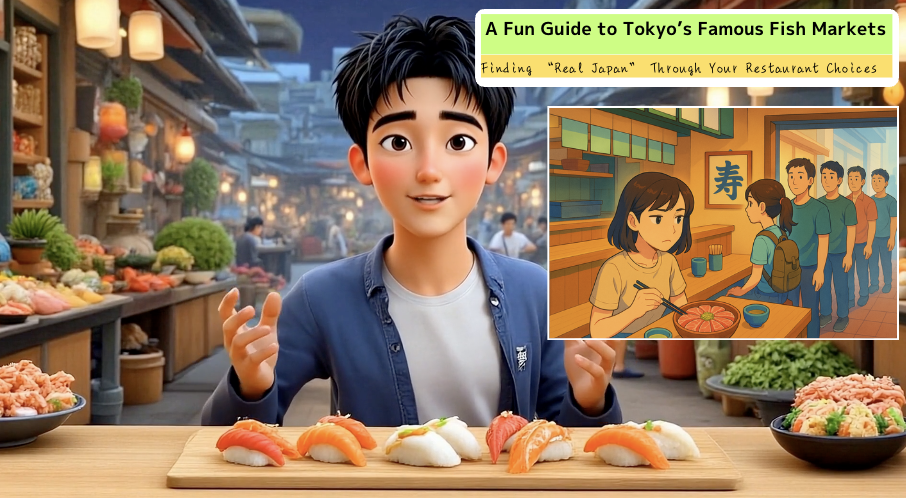
As Tsukiji and Toyosu ramped up for tourism, a lot of restaurants and stores began targeting travelers, sometimes with higher prices or flashier signs.
That doesn’t necessarily mean poor quality, but there’s a risk of feeling like you’re paying tourist rates without getting something special.
For an authentic experience, look for shops and restaurants with a longstanding local reputation, or places frequented by Japanese residents.
A good sign is if you see Japanese customers lining up, not just overseas tourists.
Also remember that Tokyo is full of hidden spots serving seafood sourced from these very markets.
Sometimes locals prefer to wander around the outer market or take a quick tour of Toyosu, and then dine somewhere else entirely, away from the tourist throngs.
Market for Sightseeing, Meals Elsewhere—One Clever Strategy
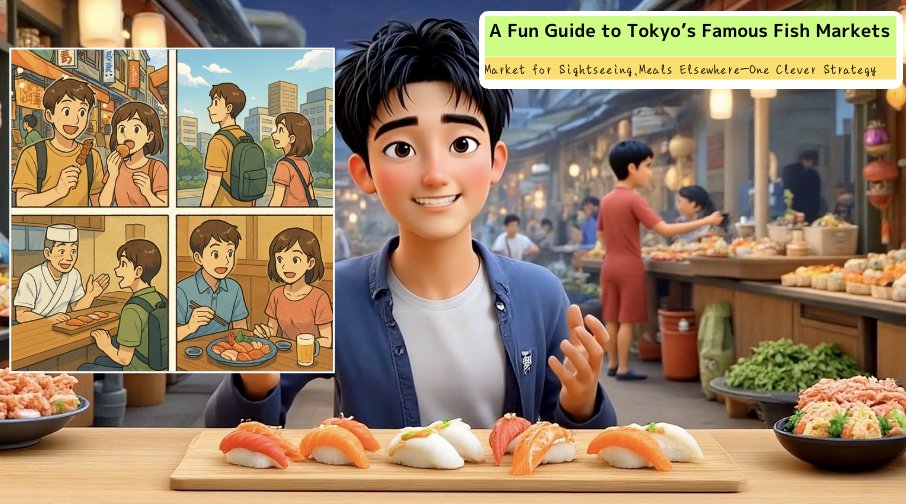
You might be surprised to hear that many locals treat Tsukiji or Toyosu more like sightseeing destinations, then head off to a different area for a proper meal.
For instance, they’ll stroll through Tsukiji, nibbling on a few snacks and soaking up the scene, then take a short trip to Ginza or Nihonbashi for a calmer dining experience at a sushi bar or seafood restaurant.
This way, you can avoid tourist prices and also find places where chefs have enough time to chat and show off their craft.
Of course, if you want the convenience of eating right inside the market, go for it.
Just be aware that you might face long waits and higher prices. Exploring beyond the market can open up a whole new world of delicious options.
Enjoy the Best of Both Tsukiji and Toyosu
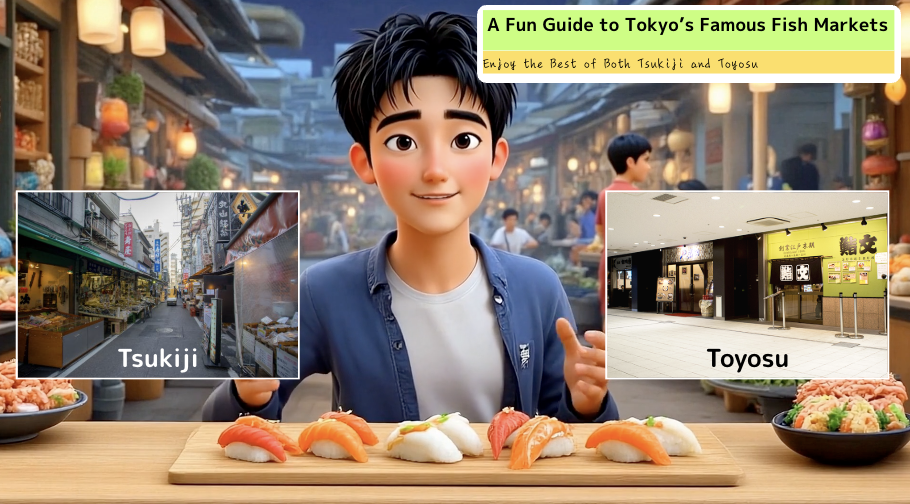
So, there you have it—Tsukiji and Toyosu each have their own charm.
Tsukiji has that old-fashioned, lively vibe and a ton of street-food style eateries, while Toyosu is crisp, modern, and designed for efficient market operations.
It’s not really about which is better; it’s about discovering what suits you.
Use the tips here to avoid the worst of the crowds and pick out truly satisfying dining options.
Even though foreign investment has changed the dynamics, there are still plenty of longstanding shops and authentic experiences to be found.
In short, do a bit of homework before you visit, and you’ll enjoy a much richer journey through Tokyo’s fish markets. Thanks for watching, and we’ll see you in the next video.
